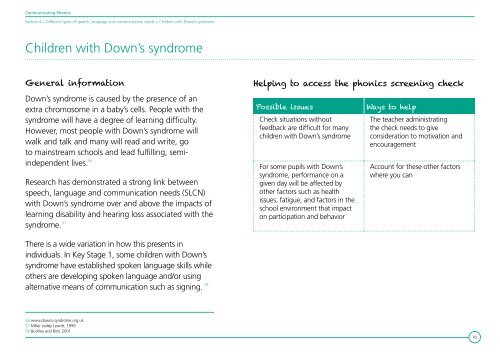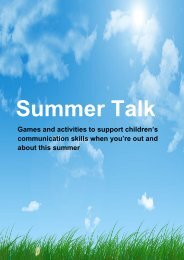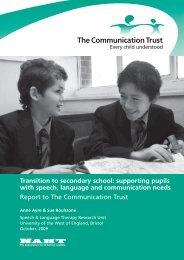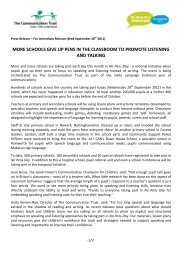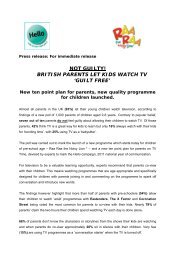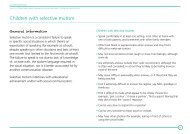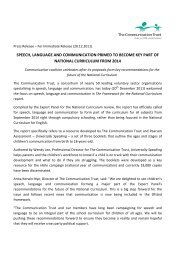Communicating Phonics - The Communication Trust
Communicating Phonics - The Communication Trust
Communicating Phonics - The Communication Trust
You also want an ePaper? Increase the reach of your titles
YUMPU automatically turns print PDFs into web optimized ePapers that Google loves.
<strong>Communicating</strong> <strong>Phonics</strong>Section 4 > Different types of speech, language and communication needs > Children with Down’s syndromeChildren with Down’s syndromeGeneral informationDown’s syndrome is caused by the presence of anextra chromosome in a baby’s cells. People with thesyndrome will have a degree of learning difficulty.However, most people with Down’s syndrome willwalk and talk and many will read and write, goto mainstream schools and lead fulfilling, semiindependentlives. 56Research has demonstrated a strong link betweenspeech, language and communication needs (SLCN)with Down’s syndrome over and above the impacts oflearning disability and hearing loss associated with thesyndrome. 57Helping to access the phonics screening checkPossible issuesCheck situations withoutfeedback are difficult for manychildren with Down’s syndromeFor some pupils with Down’ssyndrome, performance on agiven day will be affected byother factors such as healthissues, fatigue, and factors in theschool environment that impacton participation and behaviorWays to help<strong>The</strong> teacher administratingthe check needs to giveconsideration to motivation andencouragementAccount for these other factorswhere you can<strong>The</strong>re is a wide variation in how this presents inindividuals. In Key Stage 1, some children with Down’ssyndrome have established spoken language skills whileothers are developing spoken language and/or usingalternative means of communication such as signing. 5856 www.downs-syndrome.org.uk57 Miller Leddy Leavitt, 199958 Buckley and Bird, 200170


